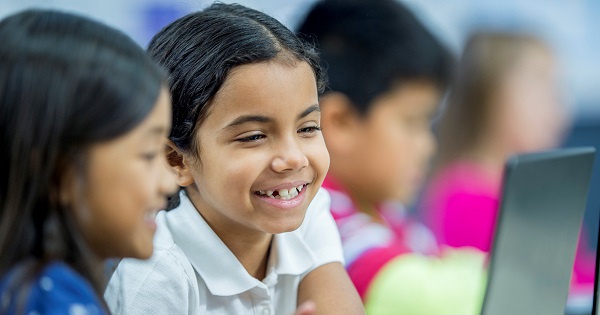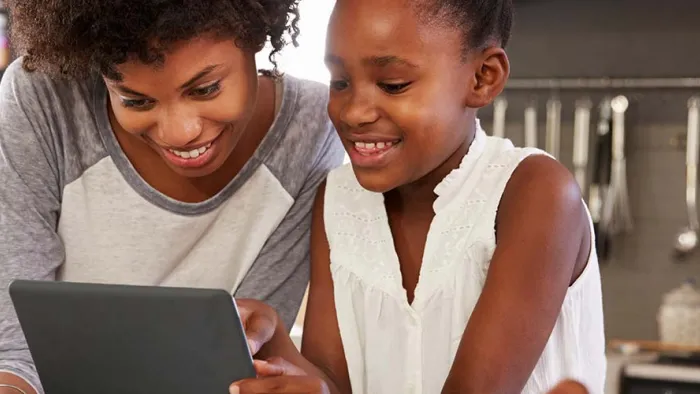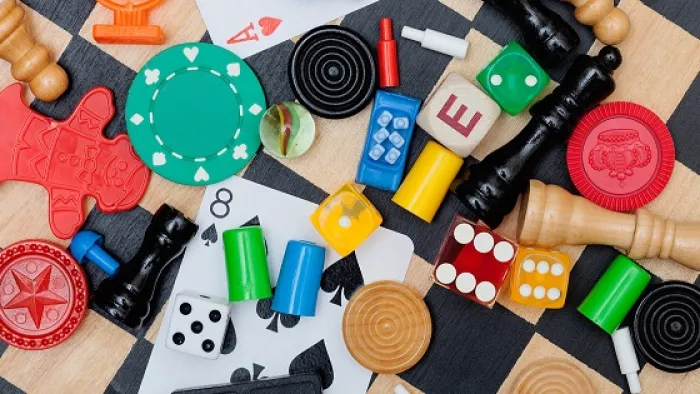Make games the driver of experiential learning in your classroom.

Watch Matthew Farber and Steve Isaacs in our archived webinar, How Games Can Be a Centerpiece for Student-Driven Learning, to learn how games can create a shared learning experience for students. Learn more.
While phonics workbooks are useful for reinforcing certain literacy skills, they are not the sole means of teaching reading. If children learn to read through whole-language approaches, why are educational games still honing in on single concepts?
Many view educational technology as a tool to support learning, not the focal point of instruction. But narrative, story-driven games can be different and can even be the centerpiece of a classroom. Much like studying a novel or analyzing a film, the systems in games can drive instruction around and about it. In this sense, games can be read like digital texts, which -- as Shaffer, Nash, and Ruis (2015) observed -- "provide students with mediated experiences."
Games as Drivers of Experiences
Would an English language arts teacher use worksheets on Shakespearean rhyming schemes to teach Romeo and Juliet to meet a particular learning standard? More likely not. A teacher might have students read from the play -- and perhaps watch film interpretations (for example, West Side Story, Romeo + Juliet). Then students could design projects based on those shared experiences. Try thinking of some games as media that can be used in the same way.
Many high school students read Henry David Thoreau's classic transcendentalist book Walden. In it, Thoreau reflects on living his life in a natural state. In a perfect world, teachers could lead class trips to the famed Massachusetts lake, guiding students to locations mentioned in the memoir. This is not feasible for most. Logistically, it is not possible for many students to experience Walden.
In early 2017, game designer Tracy Fullerton released an alpha, or early access, version of Walden, a game. Funded by the National Endowment for the Arts (NEA), the National Endowment for the Humanities (NEH), and the University of Southern California's Advancing Scholarship in the Humanities and Social Sciences, Walden, a game is a first-person exploration of Thoreau's classic work, narrated by actor Emile Hirsch (Into the Wild). The game is not action-filled. Instead, players experience life at Walden Pond, chopping wood, fishing, reading, and reflecting. Thus, playing the game, and engaging in the interactions in its system, adds meaning to the book.
Games like Walden, a game are meant to be the centerpiece for student learning -- similar to using a novel or film in class. Consider using iCivics and the Mission US suite of free learning games. Each website features lesson plans that frame student experiences and can be used to inspire student projects. Even easier alternatives to video games are board games. For example, the cooperative game Pandemic can help students understand that global interconnectedness is essential to fighting the spread of pathogens.
And then, of course, there is the multitude of experiences that Minecraft engenders. Minecraft demonstrates that games can be used in all content areas, as many educators build Minecraft experiences that immerse students in the learning. Not only do educators create environments or scenarios that allow students to learn and demonstrate their learning in the game, they bring students into the process of designing the experiences. This transforms the learning space into one that embraces student expertise and empowers students to become co-creators of the learning experiences.
Authentic Assessment Opportunities
When using games as a driver of experiential learning, do not assess play; instead, embrace reading strategies that have already proven their efficacy. One effective approach is to have students make text-to-text, text-to-self, and text-to-world connections. After playing a game, give students an opportunity to relate their in-game decisions to cause-and-effect relationships observed in other media or in their own lives. Assess students by having them create concept maps about their game experiences or by writing reflective journal entries.
Using games as a centerpiece for instruction also is an opportunity for good project-based learning. After students play Mission US, they can write a sequel using free text-adventure tools, like Twine or inkleWriter. After students solve puzzles in a BreakoutEDU escape game, challenge them to make one themed on the curriculum.
Students Create and Learn
Most learning that takes place related to Minecraft happens when students seek resources to facilitate the learning. Players go to YouTube, the Minecraft Wiki, and other sources when they need to figure out how to do something in the game that comes with no instruction manual.
Educators like Lucas Gillispie use the phrase "watch it, build it" as an assignment that puts the learning in the hands of the students. The learner seeks out a resource, which could be a YouTube video, a Snapguide tutorial, or another authentic learning artifact. They learn by following along with the tutorial. After recreating the project, students are asked to "mod," or modify, it to demonstrate a deeper level of understanding. We call this the "Watch It, Build It, Mod It" process, which is used by educators with Minecraft and other games to allow students to create content. After all, students are already experts at their informal learning spaces -- whether it's Minecraft, pixel art, anime, or fanfiction writing.
The "Watch It, Build It, Mod It" approach leverages how students learn in informal spaces and provides students with the opportunity to bring this into the school setting. This serves as a great segue to original design and building projects where students truly apply their newfound knowledge in a relevant and meaningful way.
Harnessing Student Choice and Voice
When we provide students with resources and opportunities to let their interest drive the learning, students take ownership of their learning. Good games provide students with choice, which shapes the outcome. The learning is embedded in the game. Trial and error, or "failure," are part of the process. Authentic learning is inherent in the process.
Providing choice in assessment is another powerful way to allow students to demonstrate their understanding of a topic. Rather than collecting 25 brochures with a cookie-cutter template, students can choose an approach that is relevant to them to demonstrate the learning. It's no surprise that students are requesting to use games such as Minecraft to accomplish this. It's worth noting that students often spend more time and experience a great deal of pride when this is the case.
When students have a choice about their project, their interest in sharing and showcasing their work increases. We have a unique opportunity thanks to games and content-creation tools to allow students to demonstrate a high level of agency in their learning.










